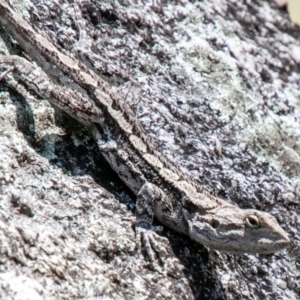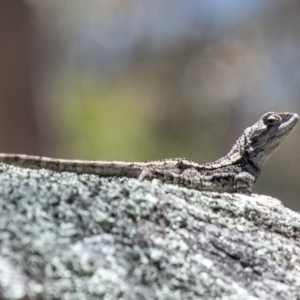Jacky Lizard at Paddys River, ACT
Identification history
| Amphibolurus muricatus | 24 Oct 2019 | WillO | ||
| Rankinia diemensis | 24 Oct 2019 | SWishart |
Identify this sighting
Please Login or Register to identify this sighting.
3 comments
SWishart
wrote:
26 Oct 2019
Hi I was just wondering what the difference between the jacky and mountain dragon was - I thought the spikes along the body and tail indicated a mountain dragon.
WillO
wrote:
26 Oct 2019
Hi. A good question. Both Jacky Lizards and Mountain Dragons have enlarged spinous scales in rows on the back. In the Jacky lizard the enlarged spiky scales form very straight rows longways down the back whereas in the Mountain Dragon the first row of spiky scales out from the mid-vertebral line (middle of the back) form a slight zig zag line rather than a straight row. Importantly Mountain Dragons have a short even row of spiky scales on either side of the base of the tail (not present in tree Dragons) and the Mountain Dragon has a noticeably shorter tail. I hope this helps. Will.
Please Login or Register to comment.
Nearby sightings
Location information
- Coordinates 148.931420-35.472977
- Altitude 1014.7m
- Maps Tidbinbilla Nature Reserve
- Places Paddys River, ACT
Sighting information
- 1 Abundance
- 23 Oct 2019 12:28 PM Recorded on
- SWishart Recorded by
Species information
- Amphibolurus muricatus Scientific name
- Jacky Lizard Common name
- Not Sensitive
- Local native
- Non-Invasive
- Up to 1264.8m Recorded at altitude
- 371 images trained Machine learning
Record quality
- Images or audio
- More than one media file
- Confirmed by an expert moderator
- Nearby sighting(s) of same species
- GPS evidence of location
- Description
- Additional attributes



































